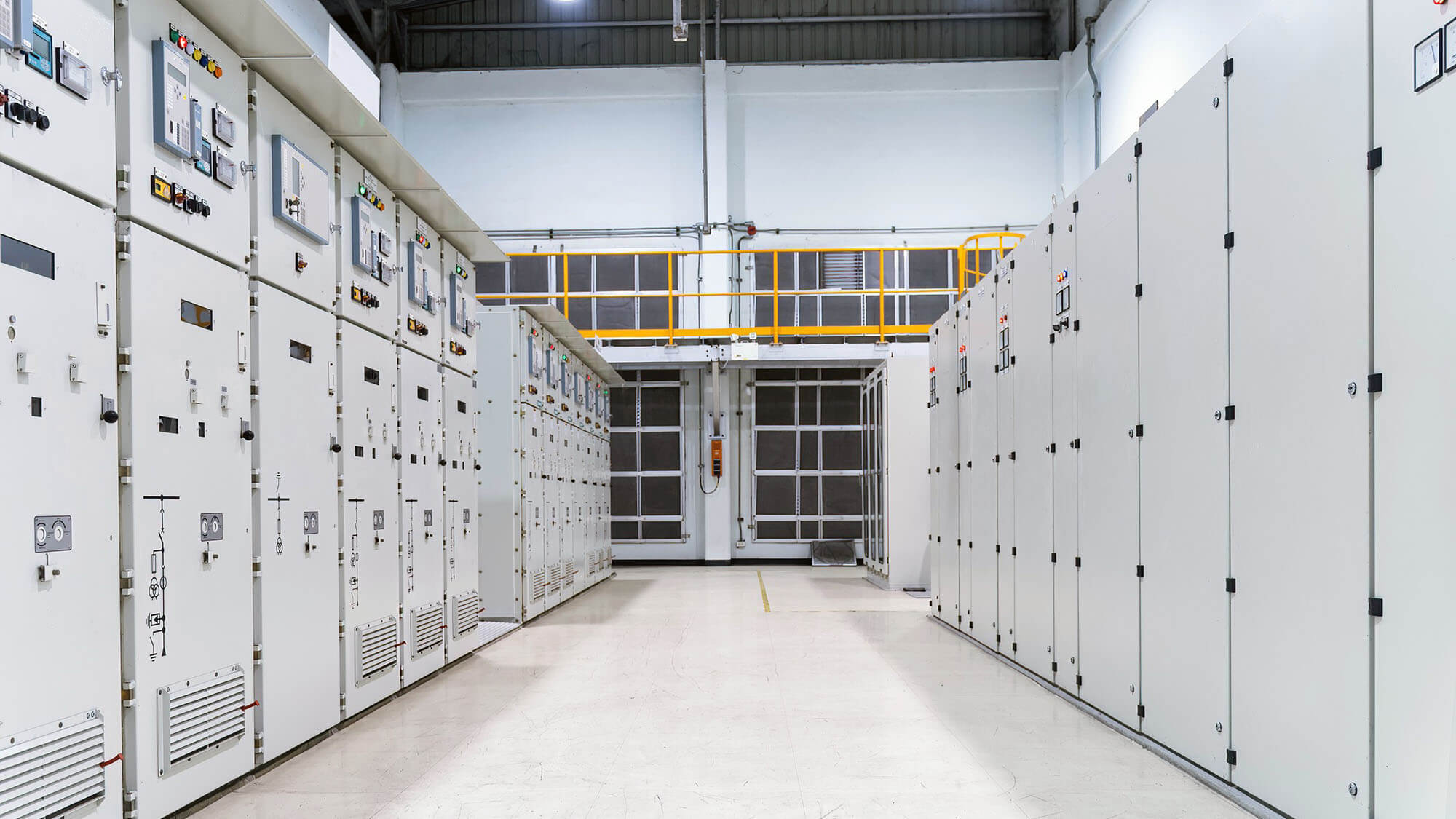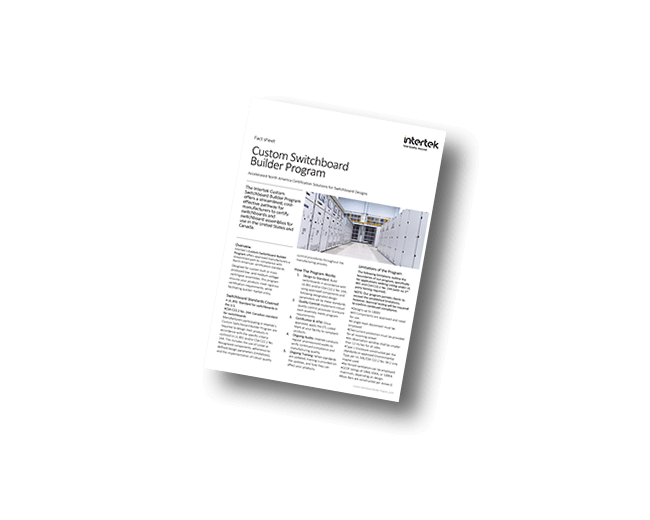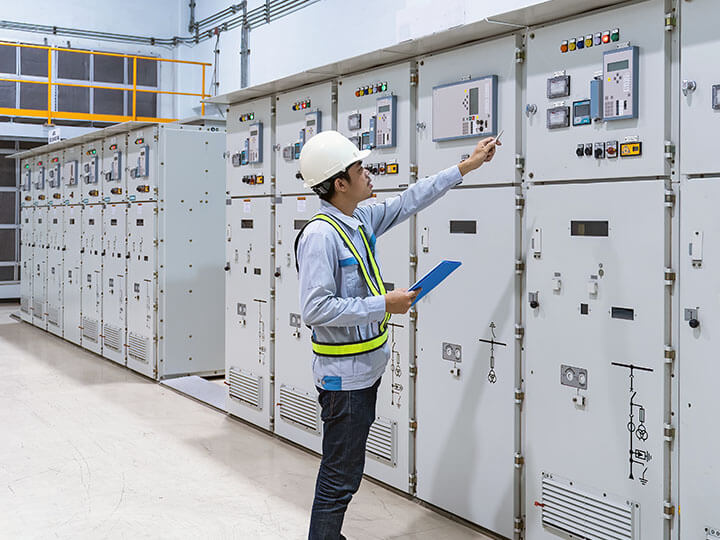Inside the Panel: Technical Considerations for Certifying Custom Switchboards

14 Oct 2025
Meeting the safety requirements of UL 891 and CSA C22.2 No. 244
Custom switchboards power the backbone of critical infrastructure, from industrial campuses and data centers to hospitals and utility networks. These assemblies are engineered for precision and performance, but to enter the North American market, they must also meet rigorous safety requirements under UL 891 and CSA C22.2 No. 244.
Understanding the certification process – and how it intersects with real-world design and construction practices – can help manufacturers move from prototype to production more efficiently, all while satisfying the expectations of regulators and Authorities Having Jurisdiction (AHJs).
Standards That Govern Custom Switchboards
UL 891 (U.S.) and CSA C22.2 No. 244 (Canada) are the primary safety standards that define how switchboards must be constructed and tested. They cover everything from internal spacing and temperature rise to labeling, enclosure integrity, and short-circuit performance.
Assembly Matters
One of the most misunderstood aspects of switchboard certification is the belief that using only Listed components guarantees compliance. In reality, UL 891 and CSA 244 evaluate the entire assembly, including how components are integrated, mounted, and protected.
This includes some principles of:
- Bus Bar Construction
- Protective Device Coordination
- Mechanical Fastening
- Ventilation and Heat Dissipation
Every detail of the physical and electrical construction must support safe operation over time and in varying conditions.
The Role of Testing in Certification
Certification isn’t just a paper trail, it requires hands-on validation to ensure a switchboard is safe, functional, and built to withstand its environment. In addition to detailed design reviews, switchboards must undergo a series of production tests, which may include:
- Dielectric Voltage Testing to confirm insulation integrity
- Continuity and Bonding Resistance Tests to verify proper grounding paths
- Functional Checks for Protective Devices to ensure correct operation under fault conditions
Even when using approved components, proper integration and assembly must be verified through documentation, inspection, and where necessary, additional testing.
Streamlining Certification Through Pre-Defined Parameters
Recognizing the technical challenges involved in certification, Intertek created the Custom Switchboard Builder Program to help streamline the process for manufacturers.
Leveraging the General Coverage framework from UL 891, this program gives pre-approved manufacturers the ability to certify switchboards directly at their facility by building within a clear, pre-evaluated set of parameters based on UL 891 and CSA 244. These parameters include:
- Operating voltage limited to 1000V
- OCP and Disconnect mean employed
- Type 1 or higher enclosure rating per UL 50E / CSA 94.2
- Use of NRTL Listed/Recognized components rated for the application
- No forced air ventilation
- No single threaded nuts employed
- No Latch Rods employed
- No clamped joints used other than rivets with washers and/or bolts with washers
- Observation windows must be no greater than 12” in any dimension
- Heating loads are 250W or less
- Thermostats for heat loads are set at 40°C or less
- Transformers/autotransformers are not rated greater than 10KA
- Bus Bars are compliant to Annex G.
Assemblies that fall within these defined limits can be labeled with the ETL Listed Mark without waiting on a separate third-party evaluation for each configuration.
Accommodating Builds Beyond Standard Program Parameters
When custom switchboard designs fall outside standard program parameters, such as those incorporating oversized transformers, unconventional enclosures, or forced ventilation, additional engineering considerations come into play. In these cases, tailored compliance strategies and supplemental testing help ensure alignment with the safety requirements outlined in UL 891 and CSA C22.2 standards.
For systems that are installed in the field, uniquely configured, or manufactured in limited quantities, on-site Field Evaluations can provide a practical path to compliance. These evaluations, which culminate in the ETL Field Evaluated Mark, offer a method for verifying that even non-standard or site-specific solutions meet the expectations of AHJs across North America.
The Bottom Line
Certifying a custom switchboard isn’t just about passing a checklist, it’s about engineering assemblies that operate safely, predictably, and in full compliance with national codes. From technical design requirements to production testing, Intertek offers manufacturers the tools and guidance they need to meet the challenge.
Whether you're building your first certified switchboard or streamlining production across dozens of sites, we can help you reduce uncertainty, meet deadlines, and power forward with confidence.


